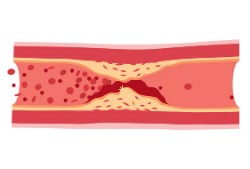10 beneficial properties of fish for humans (according to research)
Almost all fish species are rich in omega-3 fatty acids, valuable proteins, vitamins and minerals.
Scientists note that fish has important beneficial properties for humans. It is known that residents of coastal countries who constantly eat fish live longer.
Studies confirm that with the systematic use of fish, autoimmune diseases, malignant tumors are less common, and physical and mental performance improves.
10 useful properties
Below are 10 facts about the benefits of eating fish (based on evidence).
1. Extremely rich composition

Almost any fish is rich in vitamins (especially B12 and D), minerals (potassium and selenium), essential proteins and polyunsaturated fatty acids (omega-3). These substances are vital, without them the work of all organs is disrupted, and metabolism changes.
The most useful varieties of fish, according to scientists , are: trout, sardines , tuna , salmon and mackerel . They are characterized by high levels of vitamin D and omega-3 fatty acids, which are associated with most of the positive effects.
To meet the body's need for polyunsaturated fatty acids, it is recommended to eat fish at least 1-2 times a week.
2. Ensuring the growth and development of the child's body
 Specialists of the Oakland Research Institute (USA) claim
that omega-3 fatty acids, which are part of fish, are necessary for the proper development of all structures of the brain and organs of vision in children.
Specialists of the Oakland Research Institute (USA) claim
that omega-3 fatty acids, which are part of fish, are necessary for the proper development of all structures of the brain and organs of vision in children.
That's why experts recommend pregnant and lactating women should consume seafood as often as possible, especially red oily fish.
Polyunsaturated fatty acids easily penetrate the fetoplacental barrier into breast milk.
At the same time, a weekly consumption rate of up to 340 grams per week should be observed in order to avoid the negative effects of mercury (found in any fish) on the fetus or child.
3. Prevention of brain diseases
 It is established that Brain work
gradually deteriorates with age. Against the background of a decrease in the cognitive sphere (memory, attention, thinking), the risk of degenerative diseases increases, the most common of which is Alzheimer's disease.
It is established that Brain work
gradually deteriorates with age. Against the background of a decrease in the cognitive sphere (memory, attention, thinking), the risk of degenerative diseases increases, the most common of which is Alzheimer's disease.
American scientists discovered that the regular inclusion of marine fish in the diet can slow down the age-related decline of brain functions and even Improve memory and thought processes.
Fish, due to the content of large amounts of vitamin B12, also provides prevention of depressive disorders and promotes tolerance to stress loads .
4. Reducing the risk of autoimmune diseases
 Over the years, the human body becomes more sensitive to the development of autoimmune diseases due to hereditary predisposition or failures in the immune system.
Over the years, the human body becomes more sensitive to the development of autoimmune diseases due to hereditary predisposition or failures in the immune system.
Works Norwegian and Swiss experts demonstrate the ability of omega-3 polyunsaturated acids to prevent the development of type I diabetes mellitus in children and adults caused by autoimmune damage to the pancreas.
Also fatty fish varieties helps Reduce the likelihood of rheumatoid arthritis and multiple sclerosis. Such deviations have an autoimmune etiology.
5. Prevention of eye diseases
 Macular degenerative changes are a pathology of the visual organs in which the retina of the eye is affected and central vision is impaired. Is more common
in the elderly.
Macular degenerative changes are a pathology of the visual organs in which the retina of the eye is affected and central vision is impaired. Is more common
in the elderly.
According to information Harvard Medical School, regular consumption of fish rich in omega-3 fatty acids significantly reduces the risk (from 42 before 53% ) the appearance of macular degeneration.
The effect is more pronounced in women than in men.
6. Improved sleep

Norwegian Studies demonstrated that frequent consumption of fish (e.g. salmon) It helps to normalize sleep – the time interval necessary for falling asleep decreases, and the sleep itself becomes deeper.
Presumably, this effect was associated with changes in vitamin D levels in the body and heart rate.
7. Reducing the risk of atherosclerosis
 Atherosclerosis is a common and extremely dangerous disease in which deposition is observed atherosclerotic plaques
on the walls of the arteries.
Atherosclerosis is a common and extremely dangerous disease in which deposition is observed atherosclerotic plaques
on the walls of the arteries.
In the future, these formations are damaged, thrombotic masses are deposited on them, leading to complete or partial obstruction of the vessel lumen and the appearance of pathologies such as coronary heart disease, chronic cerebral ischemia, myocardial infarction, stroke, etc.
The deviation is based on an increase in total cholesterol and its atherogenic fractions (TAG, LDL, VLDL) in the blood in combination with damage to the vascular endothelium.
Omega-3 fatty acids found in fish reduce cholesterol, TAG and LDL levels in blood plasma, which provides a fairly reliable prevention of atherosclerosis. The effect has been proven in a number of studies.
For example, experts from the USA have identified there is a direct link between high intake of omega-3 fatty acids and a rare incidence of coronary heart disease, as well as a low mortality rate from this disease.
Also polyunsaturated fats prevent the appearance of fatal arrhythmias and cardiac arrest.
8. Reduction of blood pressure
 Almost any fish, both marine and freshwater, contains sufficient amounts of omega-3 acids and potassium.
Almost any fish, both marine and freshwater, contains sufficient amounts of omega-3 acids and potassium.
Potassium causes direct relaxation of the muscles of the arterial walls, and fatty acids inhibit chronic inflammation, increasing the sensitivity of vascular endothelial receptors to the effects of external factors regulating vascular resistance.
Regular consumption of fish, according to the information of the scientific community, leads to a decrease in the total peripheral vascular resistance and, consequently, a decrease in blood pressure.
The described positive effect can be used for the purpose of therapy and prevention of the early development of hypertension.
9. Prevention of anemia
 Anemia is one of the most common diseases, the incidence of which increases with age.
Anemia is one of the most common diseases, the incidence of which increases with age.
The main reason for the deviation is a deficiency of iron or vitamin B12 in the body due to various reasons: chronic blood loss, diseases of the bone marrow or gastrointestinal tract, the persistence of worms, poor nutrition.
Almost any kind of fish is rich in iron and vitamin B12. As a result of the inclusion of these elements in the diet is being restored adequate erythropoiesis at the level of red bone marrow and significantly reduces the likelihood of anemia.
10. Normalization of the thyroid gland
 Selenium is present in many fish species.
Selenium is present in many fish species.
The mineral has pronounced antioxidant activity and provides protection of all body tissues (mainly the thyroid gland) from the appearance of malignant tumors and autoimmune diseases.
With adequate intake of selenium in the body, the correct production of thyroid hormones is also restored, various diseases are less common (from toxic to nodular goiter).
Safety, possible harm
 When taking fish, a number of undesirable side effects may develop. The most common are:
When taking fish, a number of undesirable side effects may develop. The most common are:
- Dyspeptic disorders. Are caused by excessive consumption and overload of the gastrointestinal system. They are characterized by heartburn, nausea (less often – vomiting), bloating, stool disorders (from prolonged constipation to diarrhea).
- Mercury poisoning. Any fish is a potential source of this metal. With uncontrolled inclusion in the diet, symptoms of intoxication may appear.
- Helminthiasis infection. The fish may contain round, tapeworms or flatworms. They enter the human body when eating insufficiently processed fish.
- Food poisoning. Occurs when colossal amounts of bacterial toxins enter the body. Microorganisms begin to actively multiply in fish meat if the banal storage rules are not followed.
- Allergic reactions. Can manifest in different ways, and are caused by the sensitization of the body to fish proteins.
Cooking rules
 It is almost crucial to choose the right method of cooking fish, which will allow you to preserve the maximum amount of biologically active substances.
It is almost crucial to choose the right method of cooking fish, which will allow you to preserve the maximum amount of biologically active substances.
The most useful and preferred option is steaming fish. This method eliminates prolonged exposure to high temperatures, leading to the destruction of a number of valuable fatty acids and vitamins, and minimizes the amount of toxic substances present in any fish.
Less useful ways of culinary processing are:
- Boiling. During cooking, the taste and organoleptic parameters change significantly (boiled fish becomes tougher and less tasty), the biological potential decreases.
- Roasting. Frying leads to the loss of more than 75% of omega-3 fatty acids and vitamins, and the elimination of minerals from meat. An additional disadvantage of fried fish is the formation of toxic substances (when using vegetable oils) – heterocyclic amines that cause malignant processes in the body.
- Baking in the oven or grilling. Such methods preserve a significant amount of nutrients. The disadvantage is the formation of aromatic hydrocarbons, which activate chronic inflammation in the body and increase the likelihood of developing cancer.
It is not recommended to eat fish raw, although this option allows you to get all biologically active substances in their original form. There is a high risk of infection with helminths, poisoning with bacterial toxins or harmful chemicals present in river and sea water (their amount decreases during heat treatment).
Separately, it should be noted that it is not recommended to eat smoked, dried, salted or dried fish. With such processing methods, there is a significant decrease in biological potential. With incomplete drying or pickling, there is also a risk of helminths entering the body.
Canned fish can be eaten, but they should not be abused.
Caviar and liver of some fish species are also widely used in cooking.
Conclusion
Regular consumption of fish has a beneficial effect on the condition and functioning of the cardiovascular, endocrine, hematopoietic and central nervous systems, improves visual function and emotional background.
In order to increase safety and biological potential, it is necessary to correctly approach the choice of heat treatment (steam method is preferred) and take into account the likelihood of side effects.





